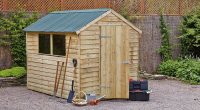The Importance of a Good Outdoor Mini Bar Fridge
My favourite thing about summer is the fact that I am able to host all kinds of gatherings in my large garden. Celebrating my birthday in mid December, Sunday barbecues, and the occasional evening party wouldn’t be the same without refreshingly cool drinks and snacks. And since living in Australia means having devilishly hot summers, storing drinks in buckets of ice won’t help. The only smart option is taking a fridge outside.

But the thing is, you can’t use just any normal fridge outside, can you? After all, we know that refrigerators working in hot conditions can have their performance reduced, and even break down due to too much sun exposure. So the question is, how can we keep our drinks cool and popsicles frozen within our reach when we’re casually lounging or have guests over? The answer – with a special outdoor mini bar fridge, of course!
You might think, inside or outside fridge, they both do the same thing. But it’s not that way. An outdoor mini bar fridge works in more extreme conditions that the inside one. While the temperature in our home remains fairly even throughout the day, outside temperatures dramatically switch from freezing cold to blistering hot. Therefore outdoor mini bars have systems that maintain a consistent cooling temperature in such an unstable environment. They also have a lot more powerful compressors and other components to be able to work even under direct sunlight.

Second, outdoor fridges have their electrical components weatherproofed. Because they can be exposed to rain, splashing from the pool and similar, even built-in cabinet mini fridges take special precautions to keep electrical parts safe and prevent electrocution accidents. Moreover, an outdoor mini bar fridge is usually made out of stainless steal and able to resist rust. However, this doesn’t mean that you should leave your fridge out in the worst of storms or leave it on during the coldest of winters.
Finally, consider where you plan to place an outdoor bar fridge. There are two types out there: built-in and freestanding. If you plan to integrate the fridge into an alfresco cabinetry, outdoor kitchen island or something of the sort, make sure you get one that’s specifically designed with vents in the front and a flush fit. On the other hand, free standing bar fridges have ventilation on the back, top, and sides which also makes them more efficient in cooling. If you have your heart set on getting one, make sure you understand all its features and take good care of it in order to enjoy refreshing drinks outdoors for years to come.



